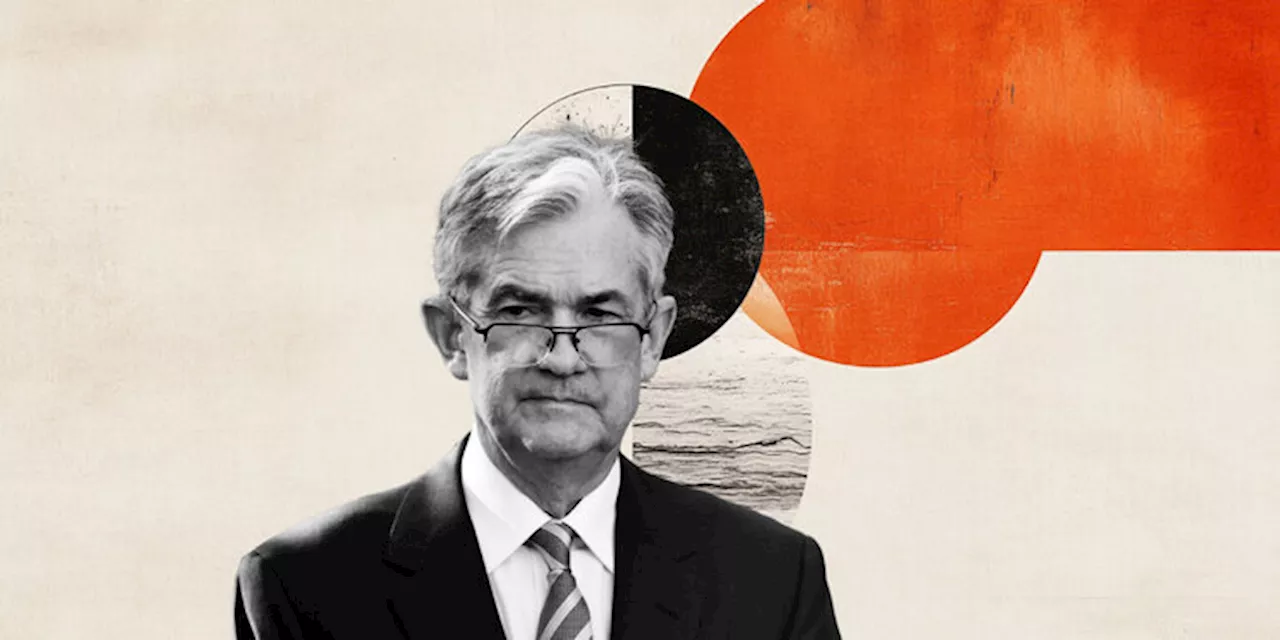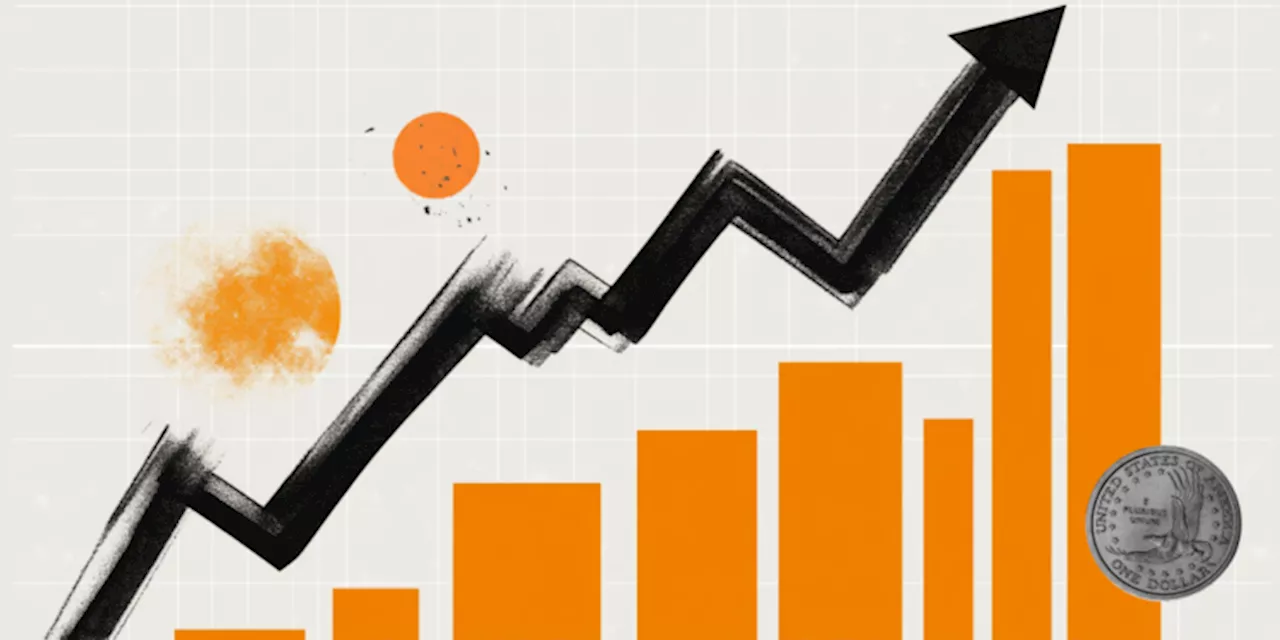The US Dollar Index declined Thursday despite stronger-than-expected Producer Price Index data. Geopolitical developments, including a potential peace agreement between Russia and Ukraine, overshadowed the positive economic news.
The US Dollar Index ( DXY ) experienced a significant decline on Thursday, failing to maintain the gains it had achieved the previous day following a rally driven by inflation data. While stronger-than-expected Producer Price Index ( PPI ) figures initially supported the US Dollar, this positive impact was overshadowed by geopolitical developments.
A breakthrough came with an agreement between US President Trump and Russian President Putin to initiate peace talks with Ukraine, leading to a decrease in market risk aversion. Adding further support to the US economy was the jobless claims data, which slightly surpassed expectations, reinforcing the resilience of the US labor market. The US Dollar Index (DXY), measuring the value of the US Dollar against a basket of currencies, struggled to sustain its gains after the Wednesday's inflation data release. Traders were quick to shift their focus from the latest PPI figures to geopolitical developments, particularly the potential peace agreement between Russia and Ukraine and the latest US jobless claims data. These developments added to the market's uncertainty, pushing the DXY below 107.30.The January PPI increased by 0.4%, exceeding the anticipated 0.3% but declining from a revised 0.5% in the previous month. Core PPI aligned with expectations at 0.3%, but December's figure was revised upward to 0.4%, indicating persistent price pressures. Initial Jobless Claims dropped to 213,000 for the week ending February 7, slightly below the projected 215,000. Continuing Jobless Claims also decreased to 1.850 million, falling short of the projected 1.880 million, highlighting the strength of the labor market.President Trump and President Putin's agreement to start peace negotiations with Ukraine triggered a wave of optimism. Meanwhile, the Federal Reserve maintained a cautious stance, with officials poised to provide further guidance on the monetary policy outlook. The Federal Sentiment Index remained unchanged but continued to signal a hawkish position, reflecting policymakers' reluctance to prematurely ease monetary policy. President Trump proposed reciprocal tariffs on nations imposing barriers on US goods, including Value Added Tax (VAT). The President referred to “non-monetary tariffs,” a concept absent in conventional economics. While details of this plan are scarce, Commerce Secretary Howard Lutnick has been tasked with refining it.Technically, the US Dollar Index is struggling to hold above the 20-day Simple Moving Average (SMA), indicating weakness following its inability to sustain Wednesday's gains. The Relative Strength Index (RSI) remains below 50, pointing to persistent bearish momentum, while the Moving Average Convergence Divergence (MACD) continues to display a negative trend. Immediate resistance lies at 108.50, with support near 107.80. A break below this level could accelerate declines towards the psychological 107.00 mark
US Dollar DXY Inflation PPI Geopolitics Russia Ukraine Federal Reserve Interest Rates Jobless Claims
United States Latest News, United States Headlines
Similar News:You can also read news stories similar to this one that we have collected from other news sources.
 US Dollar Under Pressure Amid Fed Anticipation and Geopolitical TensionsThe US Dollar Index (DXY) continues to decline, breaking below the 108.00 mark. Concerns over AI-related market valuation and President Trump's tariff threats against Colombia contribute to bearish sentiment. Economic data shows resilience in the US economy, but the Dollar remains under pressure ahead of the Federal Reserve's interest rate decision. Markets await clues on the incoming president's plans on tariffs and closely watch the Fed's statement and Chair Jerome Powell's tone.
US Dollar Under Pressure Amid Fed Anticipation and Geopolitical TensionsThe US Dollar Index (DXY) continues to decline, breaking below the 108.00 mark. Concerns over AI-related market valuation and President Trump's tariff threats against Colombia contribute to bearish sentiment. Economic data shows resilience in the US economy, but the Dollar remains under pressure ahead of the Federal Reserve's interest rate decision. Markets await clues on the incoming president's plans on tariffs and closely watch the Fed's statement and Chair Jerome Powell's tone.
Read more »
 Australian Dollar Faces Headwinds Amid Rising Trade Tensions and Geopolitical RisksThe Australian Dollar (AUD) is under pressure due to escalating trade tensions following US President Trump's tariff hike. Geopolitical risks, particularly the escalating conflict in Gaza, are adding to the AUD's woes. Conversely, the US Dollar (USD) is strengthening as the Fed signals no urgency to cut interest rates.
Australian Dollar Faces Headwinds Amid Rising Trade Tensions and Geopolitical RisksThe Australian Dollar (AUD) is under pressure due to escalating trade tensions following US President Trump's tariff hike. Geopolitical risks, particularly the escalating conflict in Gaza, are adding to the AUD's woes. Conversely, the US Dollar (USD) is strengthening as the Fed signals no urgency to cut interest rates.
Read more »
 US Dollar Index Ends Six-Week Rally Amid Rate Cut Bets and Disappointing US DataThe US Dollar Index (DXY) reversed course after reaching new cycle highs, pressured by a pullback in US yields, disappointing inflation data, and softer-than-expected labor market figures. Investors are betting on the Federal Reserve (Fed) maintaining a rate-cutting stance for the rest of the year, impacting the Greenback's rally.
US Dollar Index Ends Six-Week Rally Amid Rate Cut Bets and Disappointing US DataThe US Dollar Index (DXY) reversed course after reaching new cycle highs, pressured by a pullback in US yields, disappointing inflation data, and softer-than-expected labor market figures. Investors are betting on the Federal Reserve (Fed) maintaining a rate-cutting stance for the rest of the year, impacting the Greenback's rally.
Read more »
 US Dollar Index Dips for Second Day as Powell Signals Cautious Stance on Interest RatesThe US Dollar Index trades lower for the second consecutive session following Federal Reserve Chair Jerome Powell's testimony, which indicated a data-dependent approach to monetary policy and reduced the likelihood of a rate cut at the March meeting. Investors are cautiously evaluating Powell's neutral stance on interest rates, while technical indicators suggest a weakening dollar.
US Dollar Index Dips for Second Day as Powell Signals Cautious Stance on Interest RatesThe US Dollar Index trades lower for the second consecutive session following Federal Reserve Chair Jerome Powell's testimony, which indicated a data-dependent approach to monetary policy and reduced the likelihood of a rate cut at the March meeting. Investors are cautiously evaluating Powell's neutral stance on interest rates, while technical indicators suggest a weakening dollar.
Read more »
 Dollar Index Strengthens, Global Market OutlookThe Dollar Index is poised for further gains, with potential to reach 109 or higher. Other currency pairs like EURUSD, USDJPY, and EURJPY are expected to move in specific directions. US Treasury yields are anticipated to increase, influenced by upcoming CPI data. Stock markets, including Dow Jones, DAX, Nifty, Nikkei, and Shanghai Composite, are analyzed for their potential movements. Crude prices and metals rally following Trump's tariff announcements.
Dollar Index Strengthens, Global Market OutlookThe Dollar Index is poised for further gains, with potential to reach 109 or higher. Other currency pairs like EURUSD, USDJPY, and EURJPY are expected to move in specific directions. US Treasury yields are anticipated to increase, influenced by upcoming CPI data. Stock markets, including Dow Jones, DAX, Nifty, Nikkei, and Shanghai Composite, are analyzed for their potential movements. Crude prices and metals rally following Trump's tariff announcements.
Read more »
 US Dollar Index Reverses Course After CPI Surprise, Treasury Yields RiseThe US Dollar Index initially surged following hotter-than-expected January CPI data, but later retreated. Treasury yields climbed as markets reassessed the Federal Reserve's policy stance. Federal Reserve Chair Jerome Powell offered no concrete signals on rate cuts, reinforcing a cautious outlook for monetary policy.
US Dollar Index Reverses Course After CPI Surprise, Treasury Yields RiseThe US Dollar Index initially surged following hotter-than-expected January CPI data, but later retreated. Treasury yields climbed as markets reassessed the Federal Reserve's policy stance. Federal Reserve Chair Jerome Powell offered no concrete signals on rate cuts, reinforcing a cautious outlook for monetary policy.
Read more »
